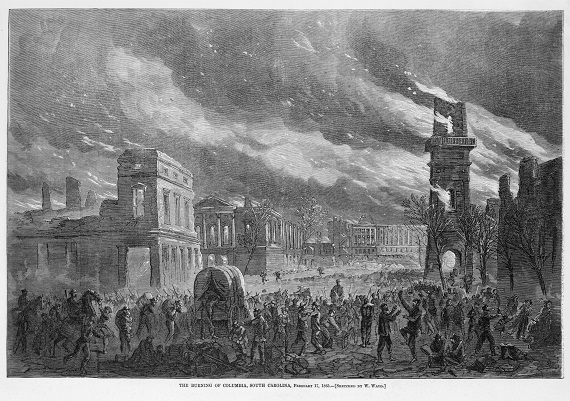
When you hear or read about the burning of Columbia, General Sherman’s principal target in South Carolina, you are often told that the origin of the fire is a historical mystery that can’t be conclusively solved, or that the fires were actually initiated by the evacuating Confederate troops, or even by the citizens of Columbia themselves—none of which is true.
In her recent book Sherman’s Flame and Blame Campaign, journalist Patricia McNeely investigated why such falsehoods about the burning of Columbia have persisted over the decades, despite the fact that she had “read an avalanche of eye-witness accounts that leave no doubt that General William T. Sherman’s drunken troops burned Columbia.” Before Columbia was surrendered on February 17, 1865, some cotton bales had been placed in the middle of Main Street “in order to be burned to prevent their falling into the possession of the invaders,” as it was stated in an official report compiled by a committee of Columbia citizens. The Confederate commanders, including General Wade Hampton, however, were afraid this might endanger the town and issued explicit orders that the cotton should not be burned, and subsequently the Confederate forces withdrew from Columbia leaving the cotton bales in the middle of the wide street (which was muddy from an overnight rain).
More @ The Abbeville Institute

No comments:
Post a Comment